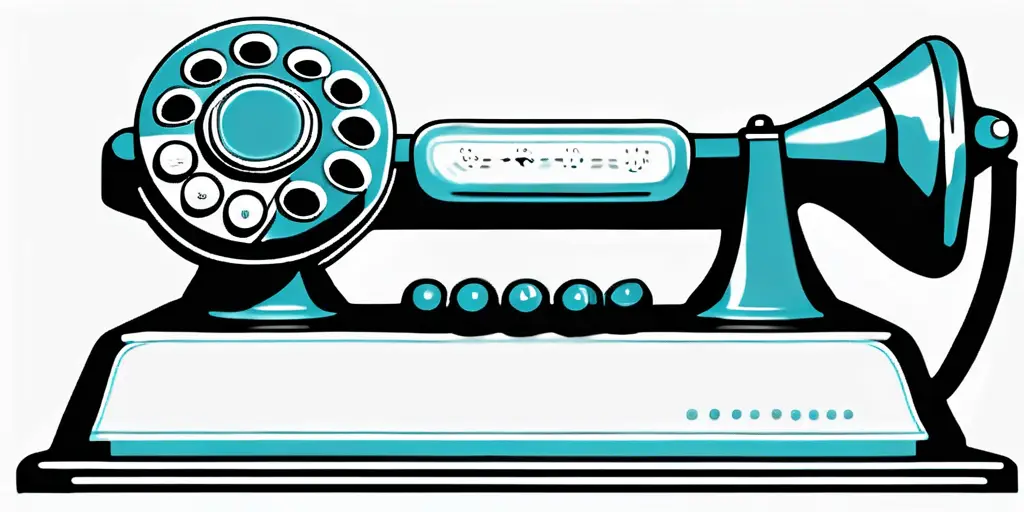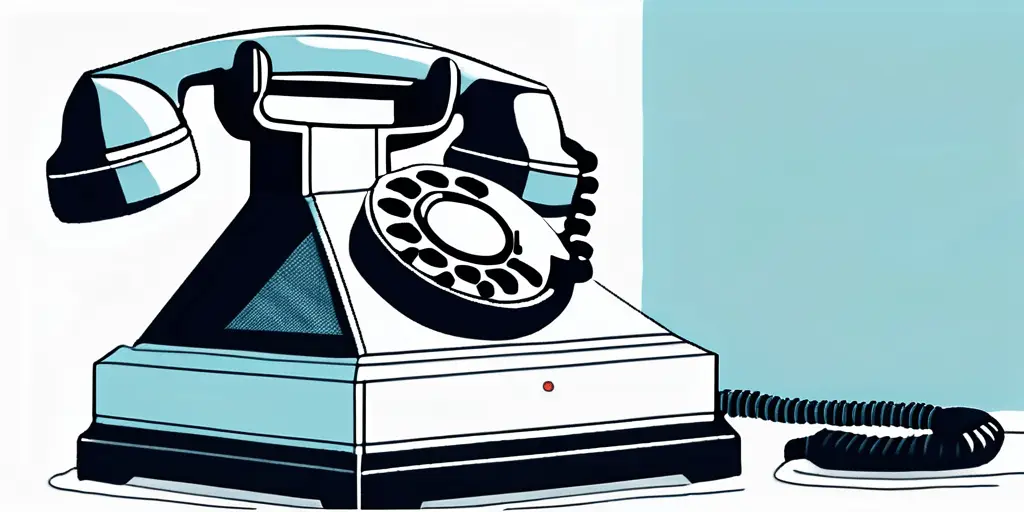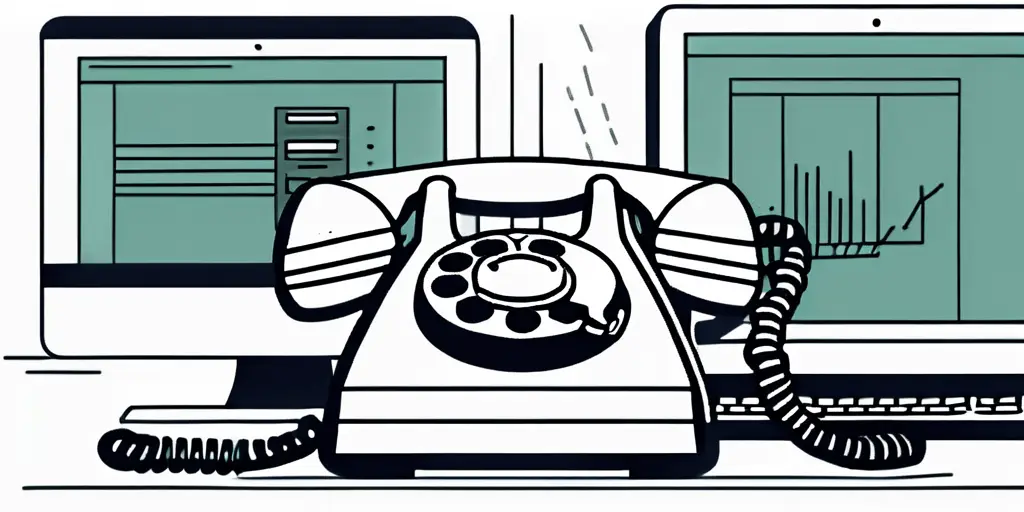War dialing is a technique employed by hackers to identify and exploit vulnerabilities in computer systems through automated phone calls. By systematically dialing a range of phone numbers, hackers can detect devices such as modems, fax machines, and voicemail systems that are connected to the public telephone network. This article aims to provide a comprehensive explanation of war dialing, including its definition, historical background, process, legal implications, impact on cybersecurity, and future trends.
Understanding the Concept of War Dialing
War dialing has been a prevalent technique in the realm of hacking for several decades. The concept involves using automated tools to scan a large number of phone numbers in search of vulnerable devices or systems that can be exploited. While the term “war dialing” may have a confrontational connotation, it is used to describe the technique rather than a physical conflict.

War dialing is a practice that has evolved alongside advancements in technology, adapting to new communication systems and security measures. As cyber threats continue to evolve, understanding the history and technical aspects of war dialing becomes crucial for cybersecurity professionals seeking to protect networks and systems from potential vulnerabilities.
The Origin and History of War Dialing
The origins of war dialing can be traced back to the early days of computer networking in the 1970s and 1980s. During this period, modems became increasingly popular for establishing remote access to computer systems. Hackers began experimenting with phone dialing software, enabling them to connect to various numbers automatically. This led to the emergence of war dialing as a method for identifying vulnerable systems.
Over the years, the practice of war dialing has become more sophisticated, incorporating advanced algorithms and techniques to target specific types of devices and networks. As technology has advanced, so too have the capabilities of hackers utilizing war dialing as a means of reconnaissance and potential exploitation.
The Technical Definition of War Dialing
From a technical perspective, war dialing refers specifically to the process of scanning a range of phone numbers to identify devices connected to the public switched telephone network (PSTN). Automated tools are programmed to dial sequential or random phone numbers and detect devices that respond or provide access. These devices often include modems, which can be exploited to gain unauthorized access to computer systems.
As cybersecurity measures have improved over time, the effectiveness of traditional war dialing techniques has diminished. However, the concept remains relevant in the broader context of penetration testing and vulnerability assessments, serving as a reminder of the importance of proactive security measures in an increasingly interconnected digital landscape.
The Process of War Dialing
Understanding how war dialing works is crucial in comprehending the risks and threats it poses to cybersecurity. This section explores the process of war dialing, including the underlying mechanics and the tools and techniques employed.

War dialing, a technique that dates back to the early days of hacking, involves the systematic dialing of phone numbers in search of computer systems, fax machines, or modems connected to a network. The process is akin to a digital reconnaissance mission, where hackers scan for potential vulnerabilities that can be exploited to gain unauthorized access.
How War Dialing Works
War dialing involves the use of software or scripts that automate the process of dialing a large range of phone numbers. These tools dial each number sequentially or randomly and analyze the responses received. The responses can vary, including busy signals, fax tones, answering machines, or modems that connect to remote systems. By identifying live modems, hackers can attempt to gain unauthorized access to vulnerable networks and exploit potential weaknesses.
Once a live modem is detected, hackers can employ various techniques to infiltrate the target network. This may involve launching brute force attacks to crack passwords, exploiting known vulnerabilities in outdated systems, or deploying social engineering tactics to trick unsuspecting users into divulging sensitive information.
Tools and Techniques Used in War Dialing
Various tools and techniques are employed in war dialing to locate and exploit vulnerable systems. One commonly used tool is WarVOX, an open-source war dialing platform. WarVOX identifies systems that answer calls and can be used for further analysis or exploitation. Other tools, such as THC-Scan, WarDialer, and ToneLoc, facilitate the identification of dial-in modem lines and voice systems, providing hackers with potential entry points into networks.
Additionally, modern war dialing techniques have evolved to incorporate machine learning algorithms that can intelligently scan and analyze responses from dial-in systems. These advanced tools can detect patterns in the data collected, enabling hackers to optimize their attack strategies and maximize the chances of successful infiltration.
The Legal and Ethical Implications of War Dialing
As with any hacking technique, war dialing raises both legal and ethical concerns. This section explores the laws against war dialing and delves into the ethical considerations surrounding its use.

War dialing, a technique used to identify and exploit vulnerabilities in computer and telecommunication systems, has been a subject of legal scrutiny in many countries. The practice involves dialing a range of phone numbers to detect modems or other devices connected to a network, potentially leading to unauthorized access. In response to the growing threat of cyber attacks, governments worldwide have implemented strict legislation to combat such activities. These laws aim to protect the integrity of communication networks and safeguard sensitive information from malicious intruders.
Laws Against War Dialing
Many countries have specific legislation that criminalizes war dialing. For example, in the United States, the Federal Communications Act prohibits unauthorized access to computer and telecommunication systems. Violations can result in severe penalties, including fines and imprisonment. Similarly, other jurisdictions worldwide have enacted legislation to counteract unauthorized access and protect their digital infrastructure.
In addition to federal laws, some states have implemented their own regulations to address the issue of war dialing. These laws often outline the permissible uses of automated dialing systems and establish penalties for unauthorized access to computer networks. By imposing strict legal consequences for engaging in war dialing activities, lawmakers seek to deter individuals from exploiting vulnerabilities in communication systems for personal gain or malicious purposes.
Ethical Concerns Surrounding War Dialing
From an ethical standpoint, war dialing raises concerns about the invasion of privacy and the potential damage it can cause. Even if the intention is not malicious, the act of scanning phone numbers indiscriminately can disrupt telecommunications services and invade the privacy of individuals or organizations. Additionally, unauthorized access resulting from war dialing can have severe consequences, including data breaches, financial losses, and reputational damage.
Moreover, the ethical implications of war dialing extend beyond individual privacy violations to encompass broader societal impacts. By exploiting vulnerabilities in communication systems, hackers can disrupt essential services, compromise sensitive information, and undermine public trust in digital technologies. As technology continues to advance, the ethical considerations surrounding war dialing become increasingly complex, requiring a balance between security measures and respect for privacy rights.
The Impact of War Dialing on Cybersecurity
War dialing poses significant risks and threats to cybersecurity. This section explores the potential consequences of war dialing attacks and the measures organizations can take to prevent such incidents from occurring.
War dialing, a technique used by hackers to automatically dial phone numbers in search of modems or other network devices, can have far-reaching implications for cybersecurity. Beyond the immediate threat of unauthorized access, war dialing can also lead to the exposure of critical systems and sensitive data. Hackers leveraging war dialing attacks can exploit vulnerabilities in outdated or misconfigured systems, potentially leading to devastating consequences for organizations.
Risks and Threats Posed by War Dialing
War dialing can lead to various cybersecurity risks and threats. By identifying vulnerable systems, hackers can gain unauthorized access and launch further attacks, such as data breaches, system compromises, or the theft of sensitive information. Moreover, war dialing can serve as a reconnaissance technique, providing hackers with valuable insights into an organization’s network architecture and potential entry points for future exploitation.
Furthermore, the impact of a successful war dialing attack extends beyond immediate financial or data losses. Organizations may also suffer reputational damage, loss of customer trust, and legal ramifications due to non-compliance with data protection regulations. The ripple effects of a war dialing incident can be profound and long-lasting, highlighting the critical importance of proactive cybersecurity measures.
Measures to Prevent War Dialing Attacks
Organizations can implement a range of measures to mitigate the risks associated with war dialing attacks. These include:
- Disabling or securing unused modems and analog phone lines.
- Implementing strong access controls and authentication mechanisms.
- Monitoring network traffic and system logs for suspicious activity.
- Regularly updating and patching software and firmware.
- Conducting vulnerability assessments and penetration testing to identify and address potential weaknesses.
Additionally, organizations can enhance their cybersecurity posture by fostering a culture of awareness and training among employees. Educating staff about the risks of social engineering tactics often used in conjunction with war dialing can help prevent successful attacks. By combining technical safeguards with human vigilance, organizations can better defend against the evolving threats posed by war dialing and other cyber attacks.
The Future of War Dialing
The landscape of war dialing continues to evolve alongside advancements in technology and the cybersecurity landscape. This section explores the potential technological advancements and predicted trends in war dialing.
War dialing, a technique that originated in the 1980s, has come a long way since its early days of scanning phone lines for modems. Today, with the proliferation of internet-connected devices, the scope of war dialing has expanded to include not just traditional phone lines but also networks, servers, and IoT devices. This broadened attack surface presents both challenges and opportunities for cybercriminals seeking to exploit vulnerabilities.
Technological Advancements and War Dialing
As technology advances, the tools and techniques employed in war dialing are expected to become more sophisticated. For instance, the integration of artificial intelligence (AI) and machine learning algorithms may enhance the automation and efficiency of war dialing processes, enabling hackers to identify vulnerable devices more accurately and exploit them more effectively.
Furthermore, the emergence of 5G technology is poised to revolutionize war dialing by providing faster and more reliable connectivity, allowing attackers to scan and infiltrate networks at an unprecedented speed. The combination of AI, machine learning, and 5G technology could potentially create a perfect storm for cyber threats, making it imperative for organizations to bolster their cybersecurity defenses.
Predicted Trends in War Dialing
Looking ahead, it is anticipated that war dialing attacks will continue to be a significant concern for organizations. As the number of internet-connected devices increases, the potential attack surface for war dialing expands. Additionally, as more devices become integrated into the Internet of Things (IoT), securing these devices against war dialing attacks will become even more critical.
Moreover, the rise of remote work and decentralized networks in the wake of the COVID-19 pandemic has created new vulnerabilities for war dialing attacks. With employees accessing corporate networks from various locations and devices, the traditional perimeter-based security model is no longer sufficient to protect against sophisticated cyber threats like war dialing.
In conclusion, war dialing is a technique that carries substantial risks and threatens the cybersecurity of organizations and individuals alike. By understanding its concept, history, process, legal implications, impact, and future trends, individuals and organizations can better protect themselves against this persistent hacking method.
As the threat landscape continues to evolve, the need for robust cybersecurity measures has never been more critical. Blue Goat Cyber, a Veteran-Owned business, is at the forefront of providing comprehensive B2B cybersecurity services. Our expertise in medical device cybersecurity, penetration testing, and compliance with HIPAA, FDA, SOC 2, and PCI standards ensures that your organization is well-equipped to defend against sophisticated techniques like war dialing. Don’t let your cybersecurity defenses become outdated. Contact us today for cybersecurity help and partner with a team that’s passionate about protecting your business and products from attackers.


